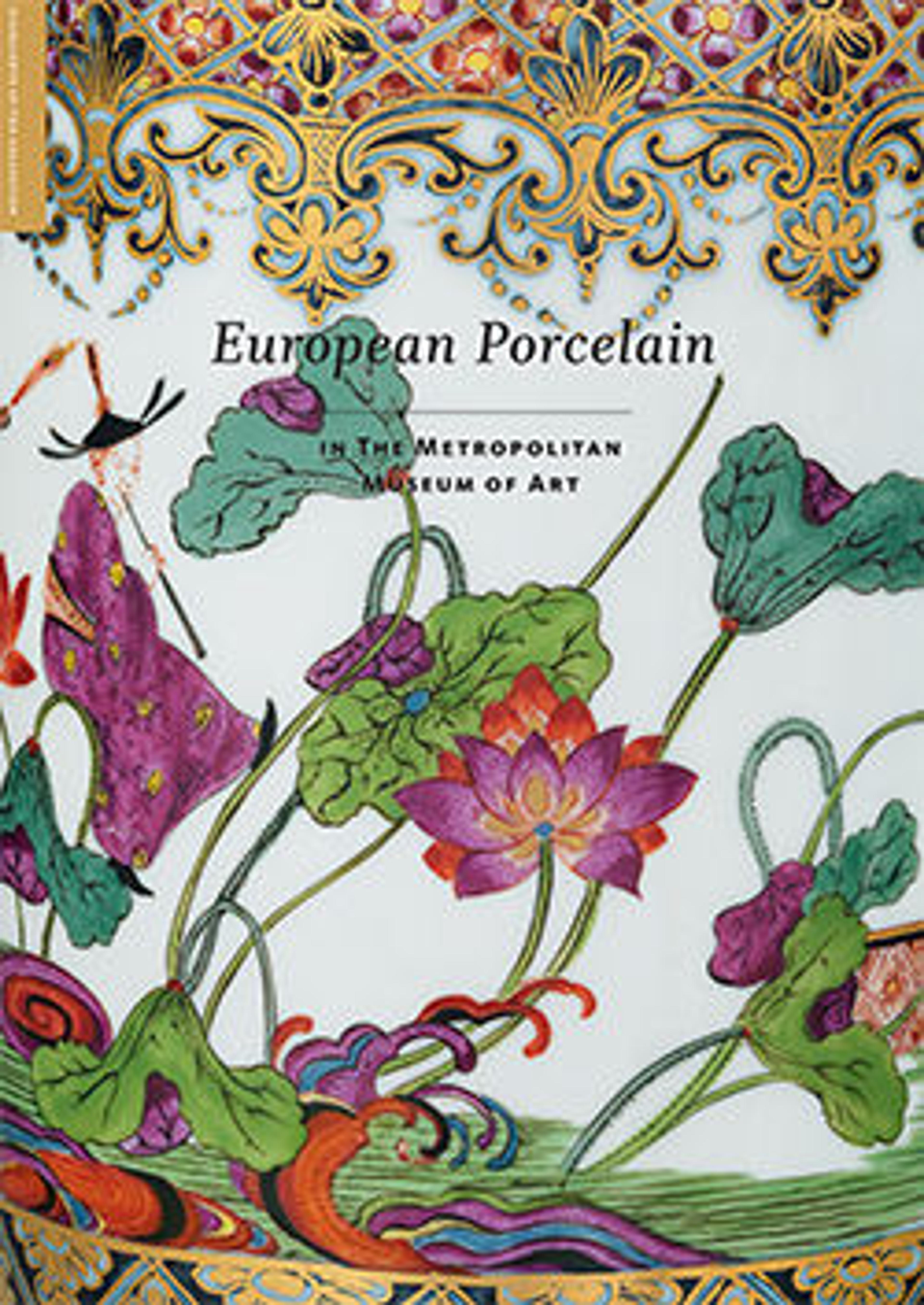Wine pot in the shape of a peach (cadogan type)
This unusual teapot is modeled in the form of a flattened peach; the spout and handle are joined to the body by means of short branches with leaves. With no opening at the top, the teapot was filled from a hole in the base that was plugged with a cork. The Meissen potters copied Chinese porcelain wine pots for the shape of the teapot, but the painted decoration is entirely European in concept, despite its seemingly Asian subject matter.
One side of the teapot is decorated with figures in exotic dress in front of a palm tree; the other depicts three figures in similar dress preparing tea. This type of scene is known by the term chinoiserie, which refers to the fanciful depictions of life in an imagined and exotic Far East. These vignettes of life in Asia reflect the European fascination with this unknown part of the world, and have little basis in reality. Understood as such, the chinoiseries that decorate Meissen porcelain of the 1720s are often painted with enormous skill, humor, and a playful spirit that makes them among the finest examples of the genre.
One side of the teapot is decorated with figures in exotic dress in front of a palm tree; the other depicts three figures in similar dress preparing tea. This type of scene is known by the term chinoiserie, which refers to the fanciful depictions of life in an imagined and exotic Far East. These vignettes of life in Asia reflect the European fascination with this unknown part of the world, and have little basis in reality. Understood as such, the chinoiseries that decorate Meissen porcelain of the 1720s are often painted with enormous skill, humor, and a playful spirit that makes them among the finest examples of the genre.
Artwork Details
- Title: Wine pot in the shape of a peach (cadogan type)
- Manufactory: Meissen Manufactory (German, 1710–present)
- Date: ca. 1725
- Culture: German, Meissen
- Medium: Hard-paste porcelain decorated in polychrome enamels, gold
- Dimensions: Overall (confirmed): 5 1/2 x 7 x 3 1/2 in. (14 x 17.8 x 8.9 cm)
- Classification: Ceramics-Porcelain
- Credit Line: The Lesley and Emma Sheafer Collection, Bequest of Emma A. Sheafer, 1973
- Object Number: 1974.356.488
- Curatorial Department: European Sculpture and Decorative Arts
More Artwork
Research Resources
The Met provides unparalleled resources for research and welcomes an international community of students and scholars. The Met's Open Access API is where creators and researchers can connect to the The Met collection. Open Access data and public domain images are available for unrestricted commercial and noncommercial use without permission or fee.
To request images under copyright and other restrictions, please use this Image Request form.
Feedback
We continue to research and examine historical and cultural context for objects in The Met collection. If you have comments or questions about this object record, please complete and submit this form. The Museum looks forward to receiving your comments.
